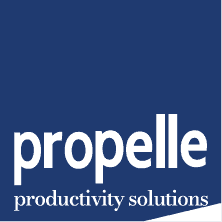There is no need to blow the SharePoint trumpet anymore. We all know that SharePoint is an indispensable tool for enhancing workplace collaboration and efficiency. However, getting the people, the humans, the users, on board can be the tricky part. These tips will offer ways encourage employee adoption of SharePoint and help you to demonstrate its long-term value in your organisation.
Why do some employees hesitate to embrace SharePoint? The reasons vary – from discomfort with new technologies to a perceived lack of value, or even the fear of disrupting established workflows. Understanding these barriers is critical. It’s about empathising with employees’ concerns and addressing them head-on. For instance, someone who’s comfortable with traditional file-sharing methods might see SharePoint as an unnecessary complication. Here, highlighting SharePoint’s superior organisation and accessibility features can shift perceptions.
Bringing employees on the SharePoint journey from the early stages can greatly improve engagement in the long-run. Involving the people who will be using the platform in the requirements and design phase of the project is a significant investment, but it will pay off. It will create a sense of buy-in or ownership by those who will be using SharePoint. End user engagement in these early design stages will improve the function of the digital workplace with a better understanding of way of working. And, it is likely to lead to a smoother roll out with decreased business challenges after launch. This in itself will increase engagement as the employee experience is always better when a system functions properly!
Rome was not built in a day. And neither were collaboration platforms like SharePoint. Whether it be to ensure content management is solid or communication channels are fluid, using a pilot group or a portion of the platform can be a great way to sharpen the tool before it is fully released. We have also found it beneficial to build the platform and functionality over time – a phased approach. Big launches are a dream for the marketing team, but they can create huge challenges for the technology and communication teams.

One-size-fits-all training programs rarely work. Employees have diverse learning styles and varying degrees of tech-ability. For SharePoint adoption to be successful, training programs must be multifaceted. Visual learners might benefit from video tutorials or online webinars, while interactive training could be more effective for kinesthetic learners. Hosting contextual training programs or creating training videos that are tailored for different parts of the workforce will be more effective. Walking the end users through the way they will engage with SharePoint for their daily tasks and business processes will also mitigate productivity downtime. Additionally, offering Q&A drop-in sessions on a regular basis will support adoption over time. And don’t forget about creating a library of easy-to-access resources (especially a wide range of training videos) as it can significantly enhance the learning curve and user comfort level.
The core strength of SharePoint lies in its ability to streamline collaboration. It’s not just about storing documents but about enabling real-time co-authoring, sharing insights, and facilitating communication. Demonstrating practical examples – like how a team can work simultaneously on a document or how easy it is to track changes and manage versions – can vividly showcase SharePoint’s collaborative capabilities. The key is to make these features relatable to everyday tasks. By promoting the benefits of SharePoint for internal communication and productivity gains will help reinforce engagement with stakeholders. In addition, work with your communications team to establish ways to drive users to the platform, so that common tasks increase adoption by default. Quickly the new platform will become familiar and comfortable, just like you favourite slippers.
Incentives play a crucial role in motivating employees to adopt new technologies. Recognising and rewarding those who actively use SharePoint can create positive reinforcement. This recognition doesn’t always have to be monetary; it could be as simple as acknowledging an employee’s effective use of SharePoint in a team meeting, which can be incredibly motivating. Additionally, creating a leaderboard for the most active SharePoint users (usage reports are available in the Admin Center) or offering small rewards for completing SharePoint-based projects can further encourage engagement. Rewarding adoption among employees will also reinforce the positive cultural transformation during change, and will continue to add to the awareness campaigns.

One of the most effective ways to ensure the successful adoption of SharePoint is by actively listening to employee feedback. This feedback is a goldmine of information for understanding user experience and areas that require improvement. Regular surveys, suggestion boxes, or informal discussions can be employed to gather this feedback. Importantly, acting on this feedback not only improves the SharePoint experience but also demonstrates to employees that their opinions are valued and considered. Feedback may lead to refining the training programs or tweaking document management processes.
The role of leadership in the adoption of SharePoint cannot be overstated. When leaders actively use SharePoint for sharing documents, managing projects, and communicating with teams, it sends a powerful message about the tool’s importance and utility. Leadership’s involvement can accelerate the adoption process, as employees often follow the example set by their managers and mentors. Leaders should therefore be advocates and power users of SharePoint. Or put plainly, leaders need to lead by example.
The ultimate goal is for SharePoint to become a natural part of the daily workflow. This integration can be achieved by gradually replacing older systems and processes with SharePoint functionalities. For instance, rather than using a shared drive for document storage, encourage teams to use SharePoint libraries. Similarly, team meetings can be managed through SharePoint calendars, and project tracking can be shifted to SharePoint lists. The more SharePoint is embedded in everyday tasks, the more indispensable it becomes. Adoption among employees will flow from integrating its use in key activities.

Nothing speaks louder than success. Sharing case studies or success stories of other organisations where SharePoint has revolutionised workflows can be highly inspiring. These stories provide practical examples of the platform’s benefits and can help to paint a picture of what’s achievable. It’s about showing the transformative impact of SharePoint in real-world scenarios, which can help in alleviating skepticism, build enthusiasm and achieve cultural transformation.
One of our success stories at Propelle was rolling out SharePoint within a project management consultancy client. We engaged with different users from the start. A cross section of the workforce from finance team members, project managers, communication team members, and executives were involved in our requirements and design phases. This mapped out the key features needed by various parts of the business, setting the platform up for success. We rolled out a varied training program for different user groups – different delivery modes and tailored content. During the staged roll-out, we gathered feedback and refined the platform to increase functionality and support engagement. We understood that each team members were responsible for key activities in the business and any feedback was responded to promptly. Not only did this increase employee trust and engagement, it also supported employee productivity. With our in-depth understanding of specific requirements from across the business from our early phases, we could be opportunistic with employee engagement and drive users to SharePoint. For example, we encouraged the sales team to the platform by housing their sales leads information in a SharePoint site – a key incentive for this team to adopt the platform! Working with this client to proactively support change and engagement attributed to the successful employee adoption of SharePoint, and in turn created a better functioning and efficient workplace.

Encouraging SharePoint adoption is a strategic process that involves understanding your workforce, providing customised training, and reinforcing usage through incentives and leadership role modeling. Start by identifying key business processes that SharePoint can improve and engage employees from across the business from the early stages. Plan an initial training session focusing on these processes and consider a small incentive to kickstart the adoption. Regularly collect feedback and make adjustments where necessary. Remember, the goal is to make SharePoint an integral and beneficial part of your organisation’s daily operations.
The adoption of SharePoint should be seen as an ongoing journey rather than a one-time event. It requires patience, effort, and a willingness to adapt. And don’t be afraid to ask for help. A SharePoint Consultant will help you achieve adoption and success with SharePoint.

© 2024 Propelle Pty Ltd